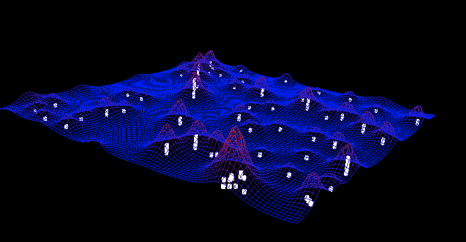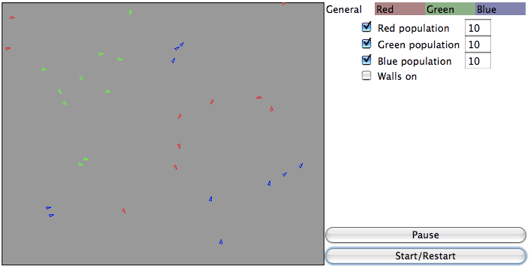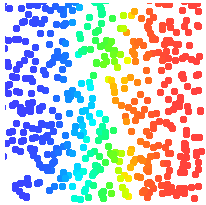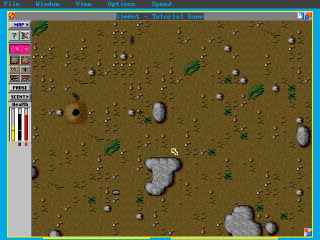Note: Java demos have been compiled with Java 1.4.2 and should work with that version or any higher.
Demo one: Birds flocking.
Translated
from French. GNU Licensed, Source.
This demo allows the user to set parameters for three
different species of bird flocking. You can set how much
they avoid other birds (repulsion), how much they align to
fly the same direction as their species (alignment) and
their force not to collide (separation). Birds of the same
species will flock together (cohesion). Interesting
behaviour arises when setting one species to have negative
repulsion (that is to want to get close to other birds) and
the others to have positive repulsion. A game of cat and
mouse begins as the negatively-repulsed birds chase the
others around the screen.
Demo
two: Heat flow.
GNU
Licensed, Source.
This simple demo models the flow of heat between two
regions of different temperature. On the left, in blue, is
the 'cold' material and the right is the 'hot'. Each
agent's temperature is set to the average of its
neighbours. Over time the overall temperature tends to a
green medium. In a MAS solution this problem is easy to
solve but the mathematics behind it are quite complex as
one of the required methods to solve it involves a
'second-order spatial derivative' being set equal to a
'first-order time derivative'.
Other
Demos:
Demo
three: MASON, Source.

Mason is
a large applet that has many individual simulations, some
of which are swarm-based. One such applet is 'heatbugs'
(Zipped Movie, 3.5
megabytes). These bugs each generate a small amount of
heat. They like to be warm, but not hot. They clump
together to try to stay warm, but, as each bug doesn't
have the same favourite temperature, they shuffle around
to keep themselves comfortable as the heat of the
environment dissipates.
Game
Implementation: SimAnt,
Source.
The 1991 game gave computer users an opportunity to
interact with a multi-agent environment where ants would
communicate using pheromone trails, gather food, build
nests, and care for young.


